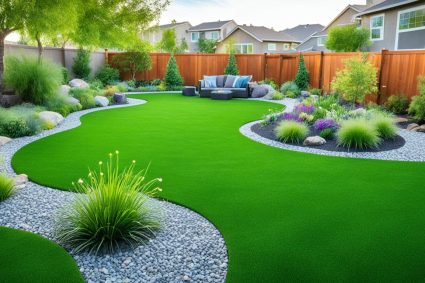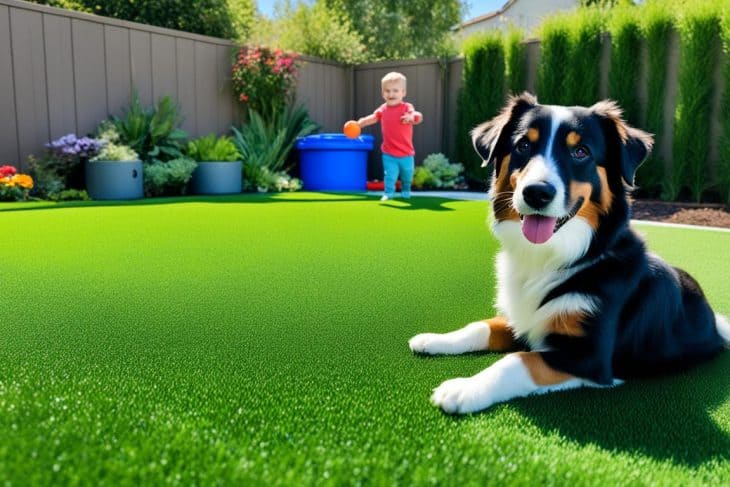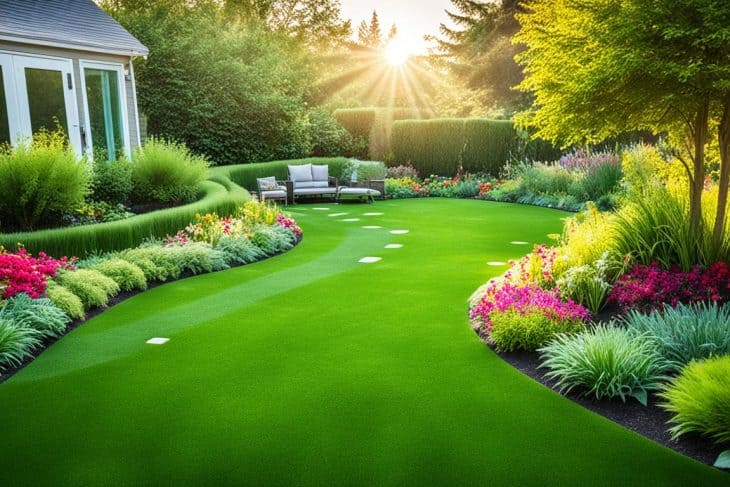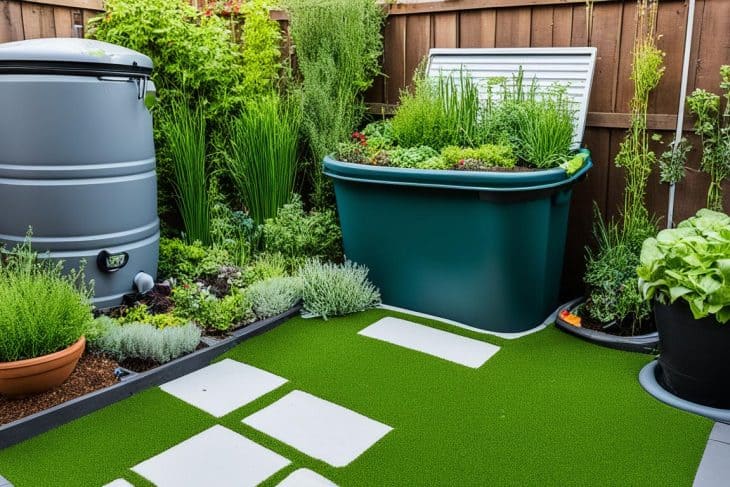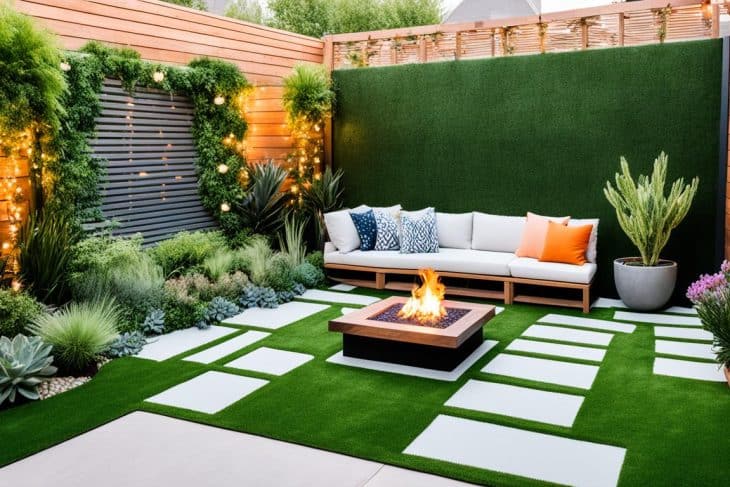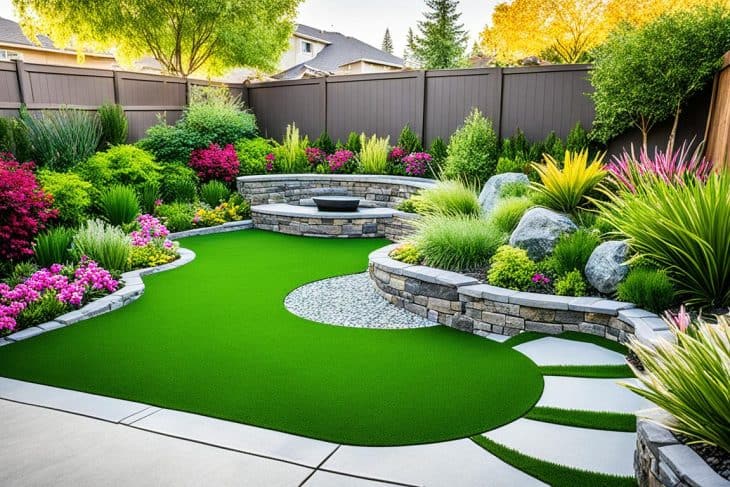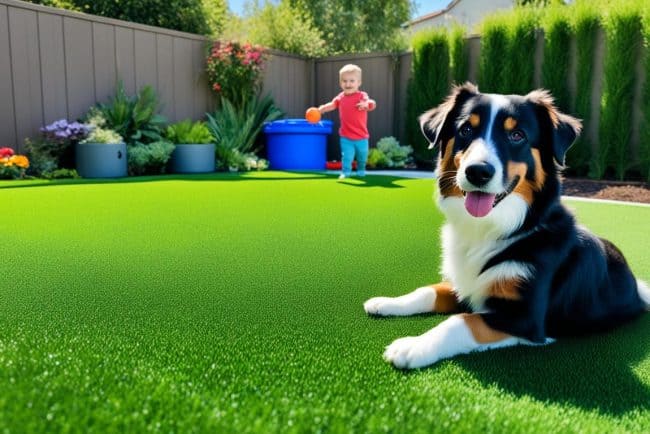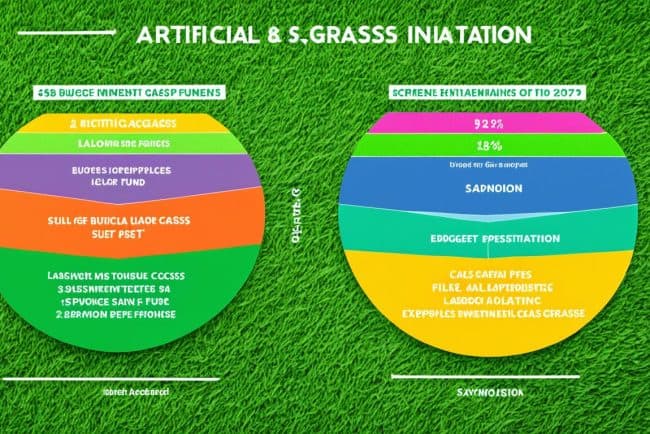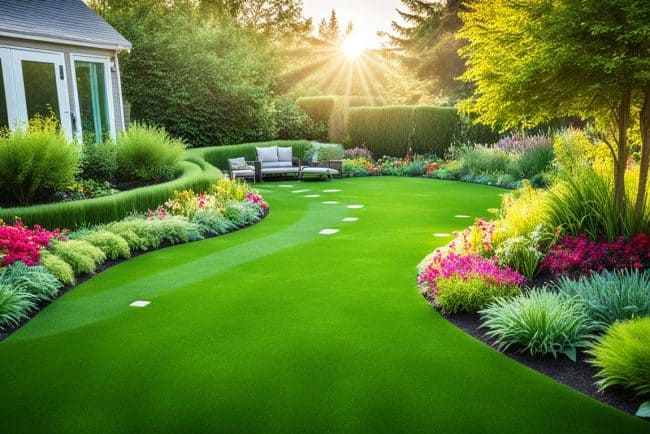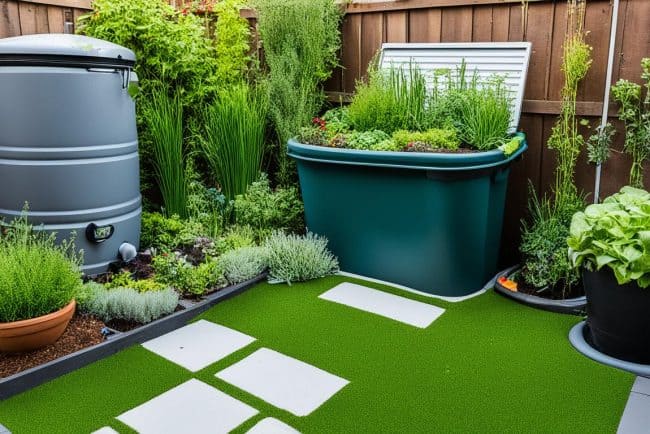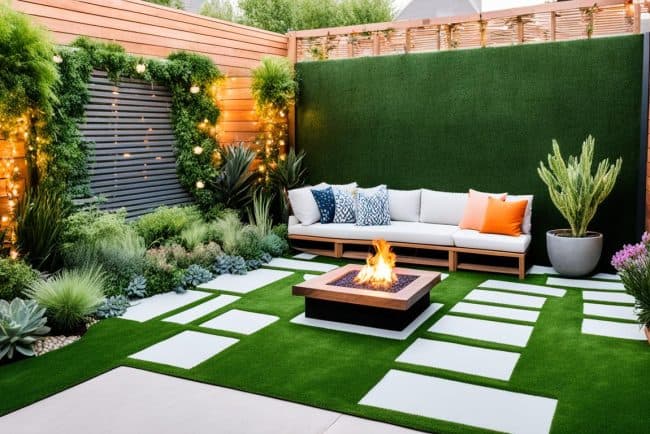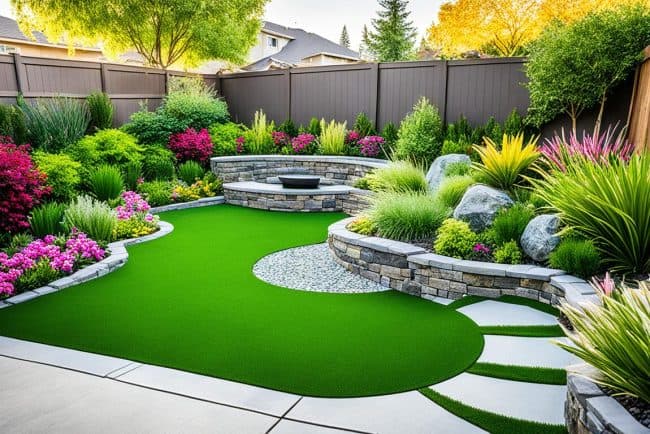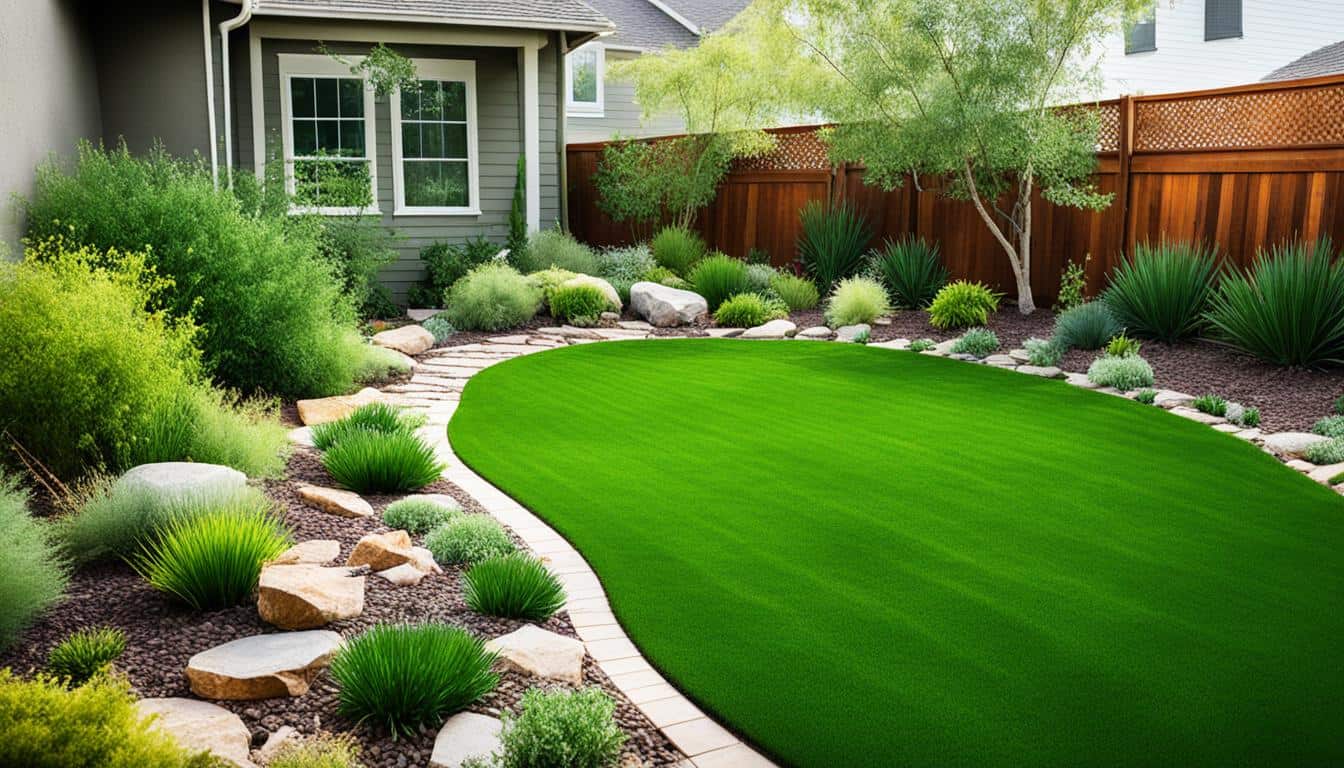
In California, people use 35,000 to 75,000 gallons of water each year just for a 1,000 sq. ft. natural grass lawn. With water being scarce, many are now turning to artificial grass. This alternative is good for the planet and looks just like a real lawn.
By choosing artificial turf, you save lots of water. This choice helps the environment, especially in dry areas like California. Here, going for a water-friendly yard means saving about 55,000 gallons of water per year per 1,000 square feet of artificial grass. When I switched, I noticed my water bills went down. Plus, I felt good for helping our planet.
Key Takeaways
- California lawns consume up to 75,000 gallons of water annually per 1,000 square feet.
- Artificial grass can save approximately 55,000 gallons of water per 1,000 square feet.
- Installing artificial turf can result in long-term savings of about 1,100,000 gallons over 20 years.
- Water conservation efforts directly impact monthly utility costs.
- Eco-friendly turf options play a key role in sustainable landscaping.
- Substituting natural grass with artificial options aids in drought relief.
The Urgency of Water Conservation
We all need to know how serious the water problem is, especially in dry areas. This issue makes it clear why saving water is so important. It also shows we must change how we use water at home.
Understanding the Water Crisis
The water crisis is getting worse, and the numbers are worrying. The California Department of Water Resources says city water use could jump by 7 million acre-feet by 2050. At the same time, farms might use 2 to 6 million acre-feet less. We need to act now, especially in cities where lots of water goes to yards.
California is trying to use less water by making new rules. One rule is people can only use 55 gallons a day, and this will go down to 50 gallons by 2030. In the 2022 drought, there were extra rules. For example, using drinking water to water grass we don’t need was not allowed in many places.
Impact of Residential Water Usage
Homes use a lot of water, and it’s a big part of saving water. About 30% of home water use is outside, but this can reach 60% in dry places. For example, people living in Southern Nevada might use 75,000 gallons a year just on their lawns. Choosing sustainable ways to landscape is key to using less water.
By picking options that use less water, like having less grass and mulching right, homeowners can cut their water use by half or more. Catching rainwater to use in the garden is another good idea. It helps save on having to use clean water and is a smart move for changing how we use water at home.
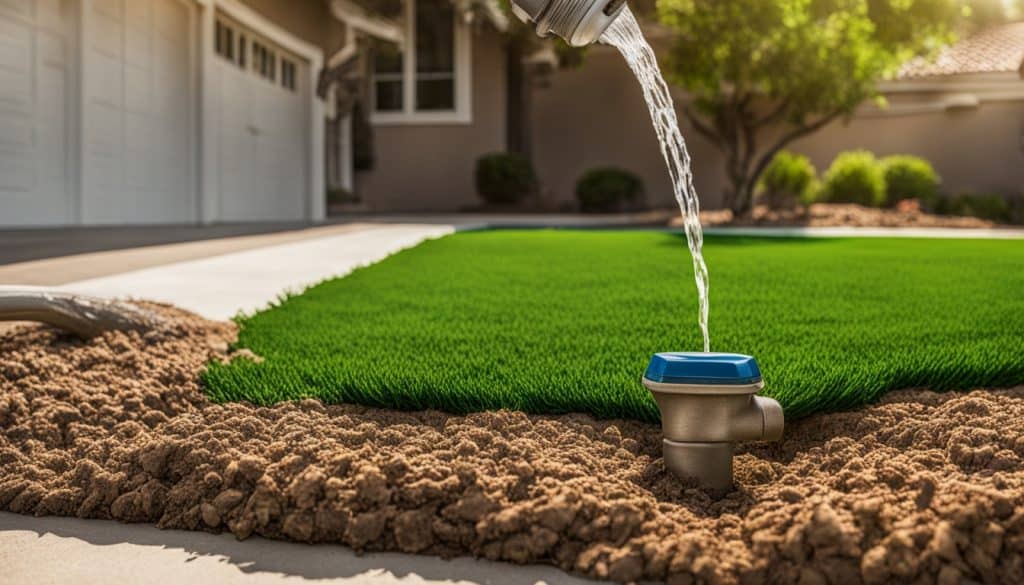
Benefits of a Water-Saving Lawn
Homeowners looking to upgrade their outdoor areas find great value in water-saving lawns. This approach is not only eco-friendly but also cuts down on expenses.
Reduction in Water Consumption
Switching to synthetic turf can reduce water consumption by up to 90%. In dry areas, natural grass needs a lot of water. Removing regular grass prevents the need for watering, thus saving on water bills.
Comparative Savings Against Natural Grass
I’ve personally seen the financial perks of a water-saving lawn. An average household can use 150,000 gallons of water yearly for a green yard. By using artificial grass, I could save about $600 each year. These water-saving lawn benefits aid in protecting the environment and saving money. Opting for synthetic turf beautifies the landscape and helps conserve local water supplies.
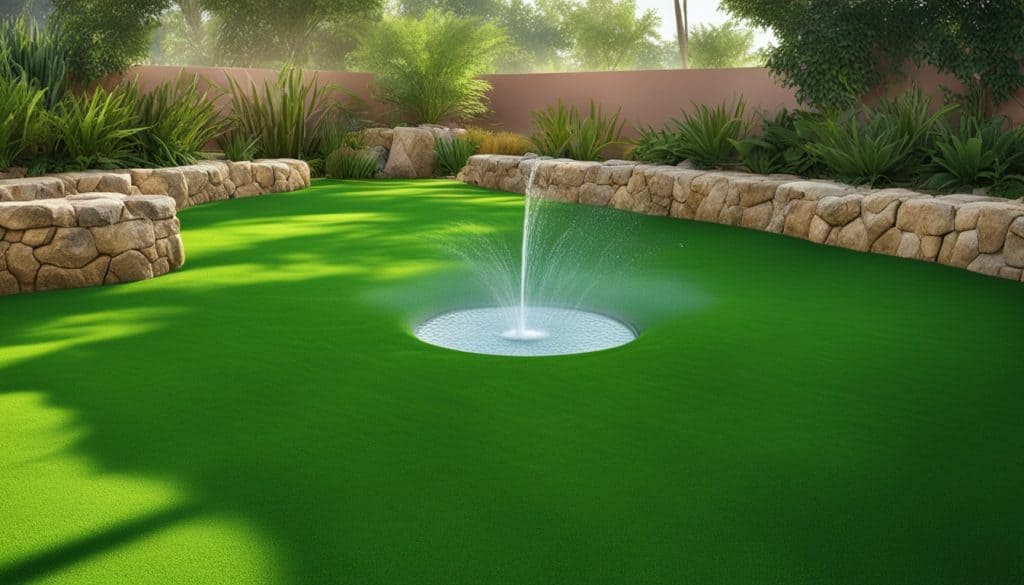
How Much Water Can You Save with Artificial Grass?
Switching to artificial grass offers impressive water savings. Many homeowners don’t know how much water they use for their lawns. In areas with little rain, traditional lawns need a lot of water every year.
Statistics on Water Usage for Traditional Lawns
Thinking about artificial grass helps us see the difference. A natural grass sports field might need up to 1.5 million gallons of water yearly. But, an artificial field could save 500,000 to 1 million gallons each year. For a smaller 1,800 square foot lawn, about 99,000 gallons of water can be saved annually. This could cut down a homeowner’s water bill by 70%.
Potential Savings for Homeowners
The savings from artificial grass depend on where you live and your lawn’s size. For example, a 1,500-square-foot lawn in California could save up to 78,000 gallons of water per year. This means big monthly and yearly savings. In California, this can add up to $142 a month, or about $1,704 a year.
In Texas, homeowners might save around $69 monthly, which is $828 a year. New York families can also enjoy savings, up to $132 monthly. That’s $1,584 a year in savings.
Environmentally Friendly Aspects of Eco-Friendly Turf
Eco-friendly turf helps the planet in big ways. It’s not just about making life easier, but also about promoting green practices. We’ll look at how it reduces chemicals and fights city heat.
Reduction of Chemical Usage
One key plus of eco-friendly turf is less chemical use. Regular lawns need lots of fertilizers and pesticides. Switching to synthetic grass cuts out these harmful chemicals. This makes outside areas safer and lessens harm to nature. It stops pollutants from getting into ecosystems.
Contribution to Urban Heat Mitigation
Eco-friendly turf also helps cool down cities. Real grass makes local temps go up, especially in busy areas. Synthetic grass helps by reflecting heat, leading to cooler places to hang out. As we tackle climate change, eco-friendly turf is crucial for sustainable cities.
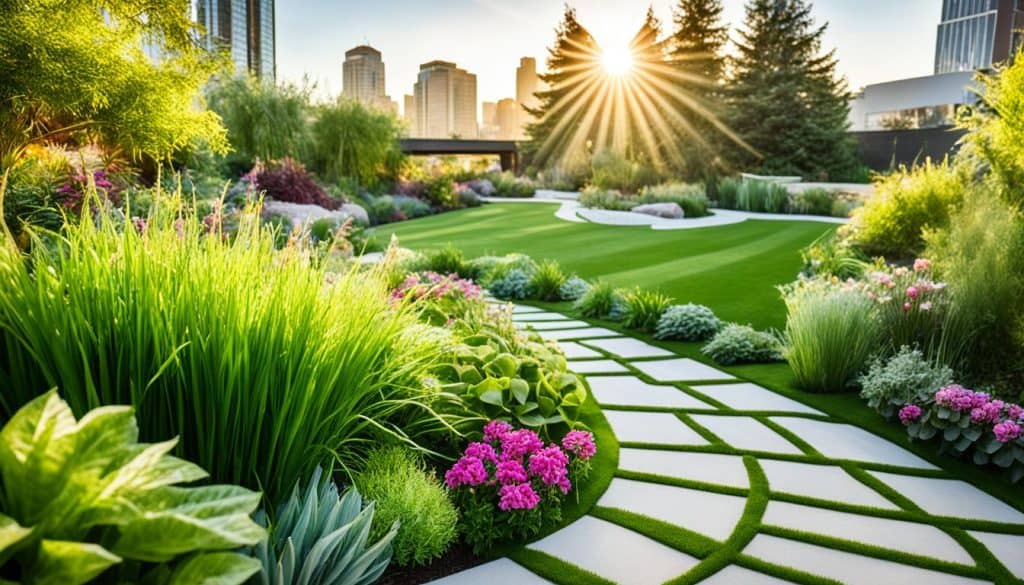
Low-Water Yard: Installation and Maintenance
Creating a low-water yard with artificial grass installation saves water and beautifies homes. The installation is simple but needs careful planning and action for lasting results. Starting with precise area measurements is key. Next, I removed old grass and debris for a smooth new turf foundation.
Installation Process of Artificial Turf
Clearing the area comes first, then leveling and compacting the soil for a solid base. After that, I put down a weed barrier to stop weeds under the new lawn. Choosing top-quality materials in the installation phase means durability and good looks for years. This process turns my yard into a beautiful, low-water space, cutting down irrigation needs in dry times.
Maintenance of artificial lawns is easy compared to real grass. I brush the turf regularly to keep fibers upright and clean off debris. It’s also important to check for any damage to keep it looking great. With these simple steps, I enjoy a lovely, water-smart garden without the hard work of traditional lawns.

